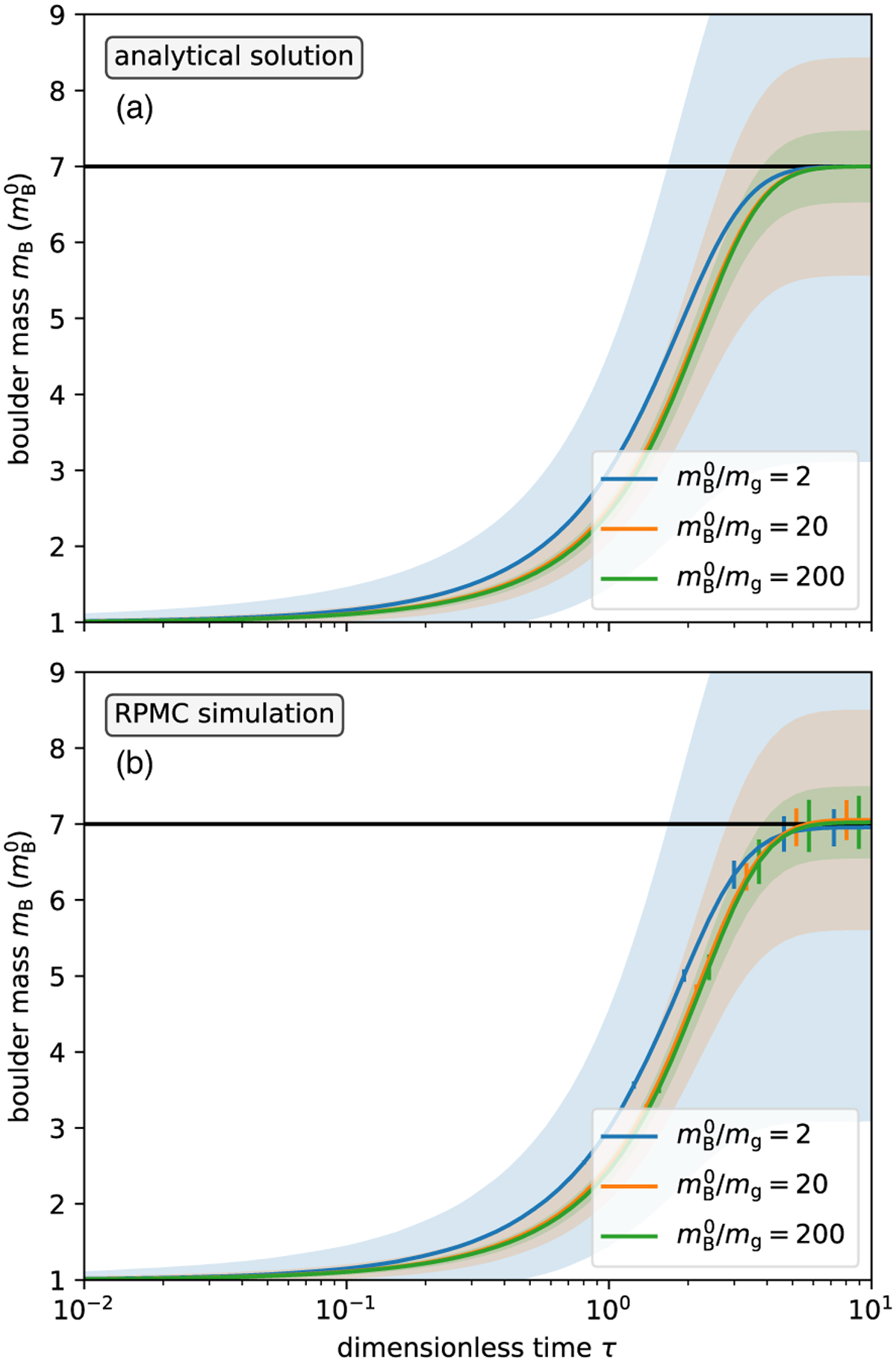Fig. 10

Download original image
Average boulder mass 〈m〉B and the physical spread ![]() for a mass-dependent collision rate Λ(m, m′) = Λ0 (m + m′) for different boulder-grain particle mass ratios: (a) analytical model as given by Eqs. (B.19), (B.21); (b) RPMC simulation. The simulation uses n = 1 792 RPs divided into nB = 256 boulder-mass RPs and ng = 6nB = 1 536 grain-mass RPs with equal-weight swarms, Mi = Mj∀i, j ∈ {1, …, n}. The boulder masses in (b) are averaged over 10 runs; the filled area indicates the physical spread
for a mass-dependent collision rate Λ(m, m′) = Λ0 (m + m′) for different boulder-grain particle mass ratios: (a) analytical model as given by Eqs. (B.19), (B.21); (b) RPMC simulation. The simulation uses n = 1 792 RPs divided into nB = 256 boulder-mass RPs and ng = 6nB = 1 536 grain-mass RPs with equal-weight swarms, Mi = Mj∀i, j ∈ {1, …, n}. The boulder masses in (b) are averaged over 10 runs; the filled area indicates the physical spread ![]() of the mass distribution, and the error bars indicate the standard deviation of the mean boulder mass over 10 runs. The horizontal black line indicates the expected final boulder mass
of the mass distribution, and the error bars indicate the standard deviation of the mean boulder mass over 10 runs. The horizontal black line indicates the expected final boulder mass ![]() . The total mass ratio of grains and boulders is
. The total mass ratio of grains and boulders is ![]() , so boulders are expected to grow to 7 times their initial mass, as indicated by the horizontal black line. The horizontal axes refer to dimensionless time
, so boulders are expected to grow to 7 times their initial mass, as indicated by the horizontal black line. The horizontal axes refer to dimensionless time ![]() .
.
Current usage metrics show cumulative count of Article Views (full-text article views including HTML views, PDF and ePub downloads, according to the available data) and Abstracts Views on Vision4Press platform.
Data correspond to usage on the plateform after 2015. The current usage metrics is available 48-96 hours after online publication and is updated daily on week days.
Initial download of the metrics may take a while.


